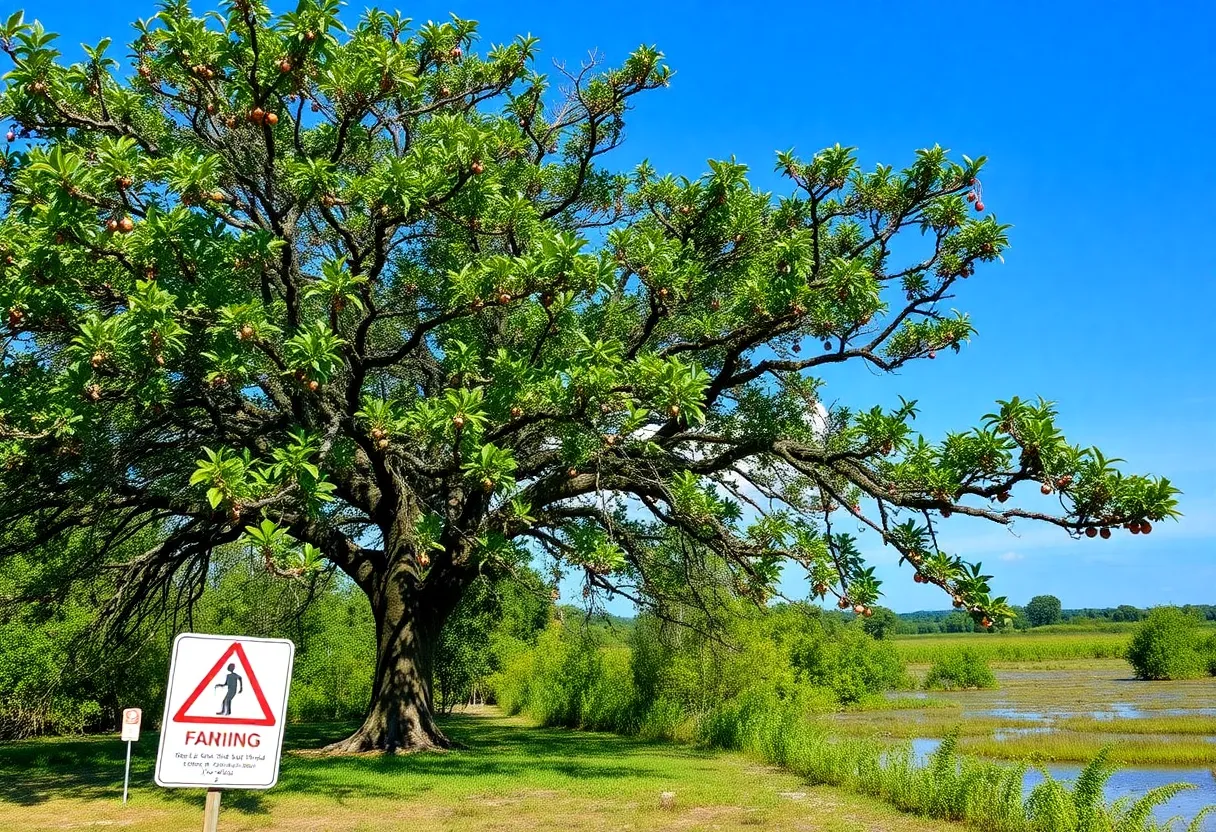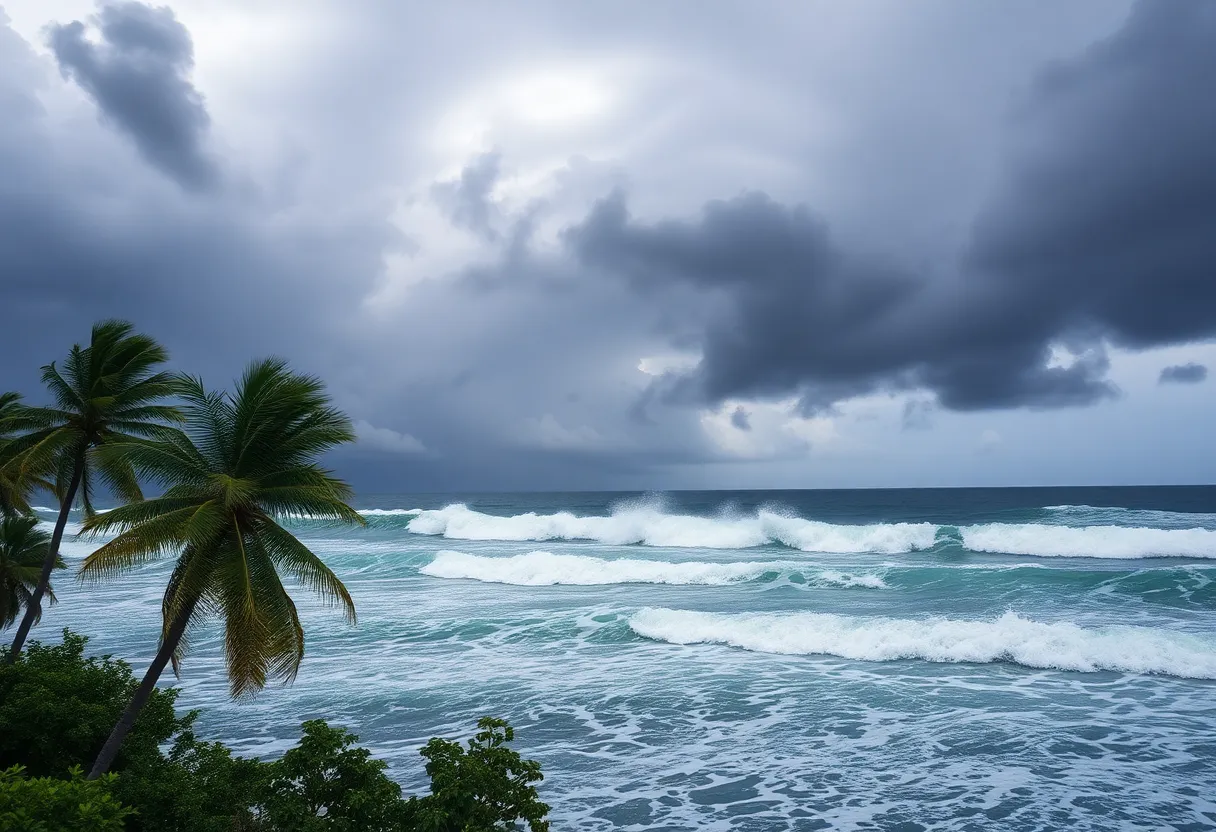News Summary
Florida has gained notoriety for being home to the Manchineel tree, recognized by Guinness World Records as the most dangerous tree in the world. Native to the region’s wetlands, the Manchineel tree is highly toxic, with every part containing potent toxins. Ingesting its fruit can lead to severe health complications, while contact with its sap may cause painful skin blisters. Historically linked to poisoning incidents, it highlights a complex relationship between danger and ecological importance. Conservation efforts are underway as it faces the risk of extinction in Florida.
Florida has recently gained the dubious distinction of hosting the most dangerous tree in the world, the Manchineel tree, as recognized by Guinness World Records. This notorious tree, native to South Florida’s wetlands, has earned an infamous reputation for its highly toxic properties that pose serious health risks to both humans and animals.
The Manchineel tree gets its name from the Spanish word for “little apple,” which aptly describes the appearance of its small, crabapple-like fruits. However, these seemingly innocuous fruits are a significant part of the tree’s lethal arsenal. Consuming the fruit can lead to severe gastrointestinal complications, internal bleeding, and intense vomiting. Its toxicity is so severe that those who have tasted it describe an initial pleasant sweetness, quickly followed by a burning sensation in the throat.
All parts of the Manchineel, including leaves, twigs, bark, and fruit, contain potent toxins that can have dire consequences. The tree produces a milky sap that can cause burn-like blisters upon contact with human skin. Additionally, exposure to smoke from burning Manchineel wood can result in severe inflammation of the eyes, which may lead to temporary blindness. Tourists and locals alike are often unaware of the dangers, making it crucial for warning signs and red rings to be placed around these hazardous trees to alert passersby.
Standing beneath a Manchineel tree during rain poses another threat, as raindrops can wash off the toxic sap and lead to dermatitis. The dangers of this tree extend beyond the individual; the Manchineel plays a significant ecological role by serving as a windbreak and helping to prevent shoreline erosion in its native habitats.
Historically, the Manchineel tree has been linked to numerous incidents of poisoning, including an account involving the Spanish explorer Ponce de León, who met an untimely end under mysterious circumstances connected to the tree’s sap. Native Americans, on the other hand, utilized the tree’s potent sap to poison their arrows, showcasing a duality in the tree’s role in human history—dangerous yet useful.
Despite its alarming toxicity, the Manchineel tree’s wood has been harvested in the past. However, extreme care was taken to neutralize its toxic sap before any use. The tree can grow up to 50 feet tall and is more widespread than many might think, with natural habitats stretching along beaches and swamps in tropical regions, particularly in the Everglades and notably within Monroe and Miami-Dade counties of Florida.
Today, the Manchineel tree faces a new threat—it is classified as an endangered species and is at risk of extinction in Florida. Ongoing conservation efforts aim to preserve this hazardous but ecologically important tree, emphasizing the balance between respecting nature’s power and ensuring public safety.
In summary, the Manchineel tree stands as a striking example of nature’s contradiction. Celebrated as the most dangerous tree in the world, it serves as a reminder of the need for caution and awareness in the natural world. Visitors to Florida are urged to educate themselves about its lethal nature to avoid unnecessary harm and appreciate the complexity of this strikingly toxic tree.
Deeper Dive: News & Info About This Topic
- Click Orlando
- Wikipedia: Manchineel
- Southern Living
- Google Search: Manchineel tree Dangers
- Fox 13 News
- Google Scholar: Manchineel tree
- NBC Miami
- Encyclopedia Britannica: Manchineel
- News 4 Jax
- Google News: Florida Manchineel tree

Author: STAFF HERE PETERSBURG WRITER
The ST PETERSBURG STAFF WRITER represents the experienced team at HEREStPetersburg.com, your go-to source for actionable local news and information in St Petersburg, Pinellas County, and beyond. Specializing in "news you can use," we cover essential topics like product reviews for personal and business needs, local business directories, politics, real estate trends, neighborhood insights, and state news affecting the area—with deep expertise drawn from years of dedicated reporting and strong community input, including local press releases and business updates. We deliver top reporting on high-value events such as Grand Prix of St. Petersburg, Localtopia, and SHINE Mural Festival. Our coverage extends to key organizations like the St. Petersburg Area Chamber of Commerce and St. Pete Downtown Partnership, plus leading businesses in finance, manufacturing, and healthcare that power the local economy such as Raymond James Financial, Jabil, and Bayfront Health St. Petersburg. As part of the broader HERE network, including HEREJacksonville.com, HEREOrlando.com, HERETallahassee.com, and HERETampa.com, we provide comprehensive, credible insights into Florida's dynamic landscape.





